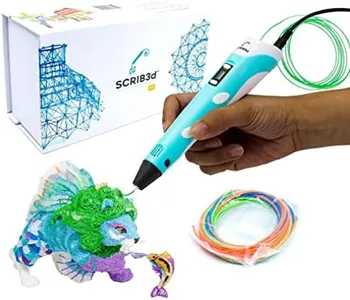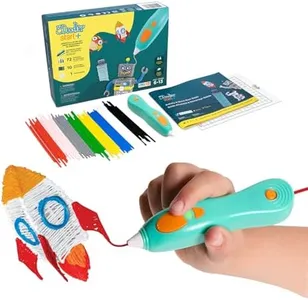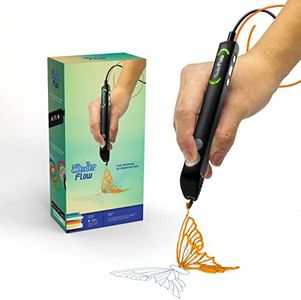We Use CookiesWe use cookies to enhance the security, performance,
functionality and for analytical and promotional activities. By continuing to browse this site you
are agreeing to our privacy policy
4 Best 3D Pen
From leading brands and best sellers available on the web.Buying Guide for the Best 3D Pen
Choosing the right 3D pen is all about understanding how you plan to use it. Whether you’re interested in simple crafts, detailed artwork, DIY fixes, or introducing children to 3D design, knowing the key features will help you find a model that matches your experience level and project goals. Don’t rush: Think about who will use the pen, what kind of projects you’ll create, and which features will make your experience enjoyable and frustration-free.Filament Type CompatibilityFilament type refers to the material your 3D pen uses to draw—most commonly PLA and ABS plastics. Choosing the right filament matters because some are safer for kids, some create smoother results, and others are stronger for repairs. PLA is known for being easy to use, with less odor and lower melting point, making it ideal for beginners or youngsters. ABS is tougher and more heat-resistant but releases a smell and needs higher temperatures. Some pens support only one type, while others handle several. Think about who’s using the pen and for what; go for multi-filament compatibility if you want more versatility or stick to PLA for a safer, simpler experience.
Temperature ControlTemperature control allows you to adjust how hot the pen gets, which is crucial since different filaments melt at different temperatures. A pen with precise temperature controls gives you more freedom to try various materials and fine-tune your results, especially for advanced users or varied projects. Some pens offer simple low/high switches, while others have digital controls for more exact settings. Choose basic controls if you’re a beginner or buying for children, and look for detailed temperature options if you plan to experiment with multiple filaments or detailed designs.
Speed SettingsSpeed settings control how fast melted plastic comes out of the pen. This affects how easily you can draw: slower speeds are great for careful detailing and complex shapes, while faster speeds suit quick work or filling in larger areas. Cheaper or beginner pens may have just one or two fixed speeds, while advanced pens can give you more precise or variable speed control. Select a pen with basic speeds if you’re new to 3D drawing, or choose multi-speed options if precision, versatility, and adaptability matter for your projects.
Nozzle SizeNozzle size is the diameter of the opening where the melted filament comes out. Smaller nozzles (around 0.5mm or less) are better for fine, detailed work while larger nozzles (0.7mm and above) let you draw faster and create thicker lines. Some pens offer interchangeable nozzles. To choose the right size, think about the type of work you’ll do—detailed art or models need smaller nozzles, while basic crafting or covering larger surfaces works better with bigger ones.
Ergonomics and DesignErgonomics means how comfortable the pen is to hold and use for long periods. Lighter, slimmer pens suit kids and small hands, while adult users may prefer a slightly larger grip. The placement of buttons, weight, and overall balance all influence whether the pen feels natural or tiring. Try to envision how long you’ll use it per session and if multiple family members will share—this helps you spot designs that are comfortable for everyone.
Power Source3D pens are either plugged in with a cord or powered by a rechargeable battery. Corded pens give continuous power, which is great for long sessions, but restrict movement. Battery-powered pens let you work anywhere, making them convenient for travel or shared spaces, though charging limitations and battery life may interrupt longer projects. Decide if you’ll use the pen in one spot or want the freedom to carry it around; go for battery-powered if portability is important or plug-in if you need reliability for extended use.



